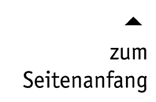|
|
 |
|||||||||||
|
|
Collage.Works on International Deaf HistoryThe impulse to put this collection together was the 2nd International conference on Deaf History, which took place from the 1st-4th of October 1994 at the University of Hamburg. This conference was a combined effort of the Association Deaf History International, the German Society for Sign Language, and the Centre for German Sign Language and Communication of the Deaf (Hamburg). Directly following the conference, a concept was developed for the publication of a book which would reflect the different ways of treating themes from the field of Deaf History and the same time fulfil the wish of deaf participants to put the visual-illustrative aspect before the textual aspect. At the express request of the editors, the authors included in this volume took on the challenge of re-working their contributions and giving them a style more similar to a catalog than to the traditional form of conference proceedings. This concept was a practical attempt to bridge the gap between academic research and research done by (deaf or hearing) non-professionals – the goal was, after all, to pass on questions and answers to the interested readers, people who are found in lecture halls as well as in tradeshops, offices or schools. Just as in a real collage, the material we deal with in this volume titled “Collage” actually couldn’t be more varied. Contributions from countries on all continents are included. A reader will meet the English prisoner Elizabeth Steel in Australia, another reader runs into the French-Swiss philosopher Jean-Jacques Rousseau; other get to know the teachers and pupils of a deaf school in Zimbabwe through their group photo, and the Emir of the deaf in Kano, Nigeria, makes an appearance when the Russian Czarina Maria Fedorovna has a chat with the Columbus Colony in Ohio. Oblivious to all these goings-on, a ghost makes his haunting visits to the cabin of the Oslo Deaf Film Club … It can’t get much more colorful than this. The different themes and materials, cut out, scrambled up, and pasted back together, show a lightness and transparancy that hardly seems suitable to the gravity of the topic – repression and disadvantage we see again and again in the texts dealing with the histroy of deaf people and their sign languages. In studying the pictures, in reading the texts, however, a completely different dimension begins to unfold. It pushes the sorrowful story of deaf people into the background and shows something of the initiative, the power, and the fantasy of deaf individuals and communities and lets a story of sensitivity and tenderness shine through – a story no longer of helpless victims, but rather of cycling scholars, of celebrating crowds on the occasion of the famous Abbé de L’Epée’s 200th birthday, of clashing fronts in the riots in Sydney. It is a story of dilemma, when deaf people demanded the sterilization of their deaf fellows, and of love, when Maria Klingenberg and Fritz Hirn met. A collage is the result of the destruction of material and of content. The impression of completeness and coherence in the presentation of what are casually called “historical facts” is also destroyed. A collage puts the severed pieces back together in a new way and, if it is a success, creates a new perspective of theses “facts”. Without a doubt, it is a statement of the courage to leave blanks. Last but not least, a collage is made up of pictures, something that this volume has a lot of, but for our tastes still not enough. Fischer, Renate and Tomas Vollhaber (eds.): Collage. Works on International Deaf History. Broschur / Paperback, 304 Seiten, Signum 1996, ISBN 3-927731-59-5. EUR 25,56 |
|||||||||||
 |
Erhältlich über jede Buchhandlung. Oder bestellen Sie diesen Titel schriftlich oder telefonisch direkt beim Signum Verlag. |